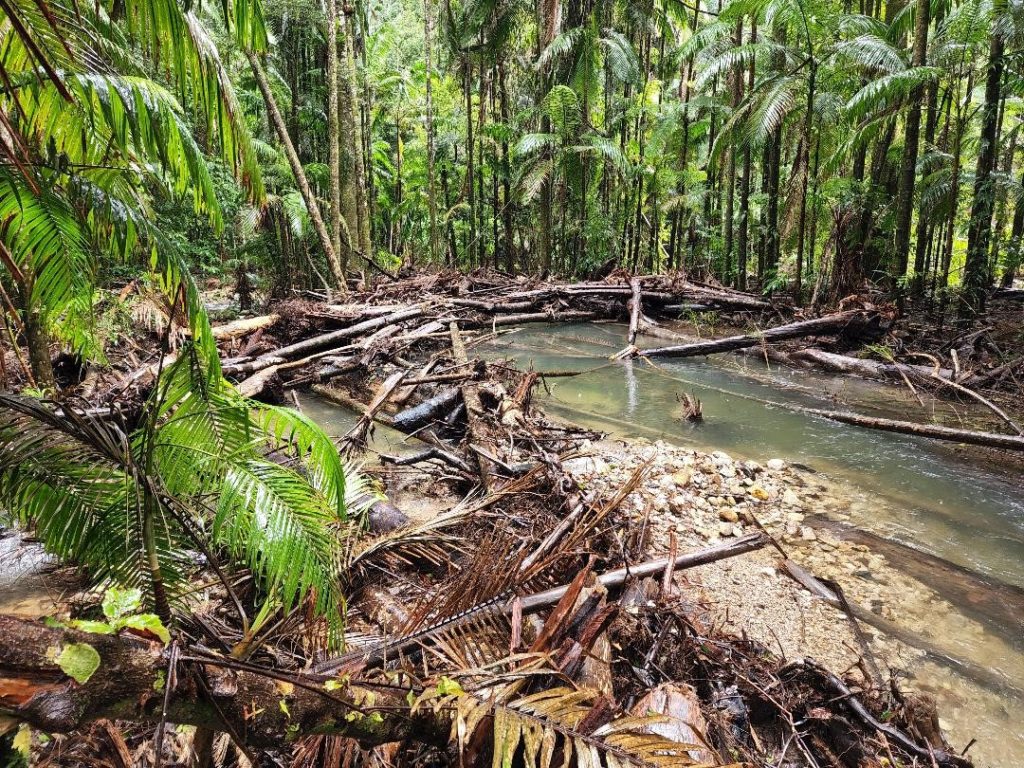- Project Overview
The Nature-based Solutions: Building Flood Resilience in the Lismore Catchment project (NBS project) is funded through the National Emergency Management Agency (NEMA) Disaster Ready Fund (DRF), which is administered through the New South Wales Reconstruction Authority. Richmond Landcare Incorporated (RLI) secured $2.8 million under DRF Round One to undertake the NBS project. RLI must match this funding with $2.8 million co-contributions.
The NBS project is a pilot that will test the role of Nature-based Solutions in reducing flood and erosion risk in the Lismore catchment; through protecting, rehabilitating and emulating the natural functions of catchments, floodplains and rivers.
The NBS project objectives are to:
- Establish sites within upper sub-catchments of the Wilson’s River catchment that can be monitored so that the resulting reduction in flow and sediment loads can be quantified. This will inform hydrological models and potential decision support tools for future uptake. RLI will work with Landcare groups, the community, including through citizen science, to help deliver the pilot project.
- Work with First Nations people to better understand cultural values and outcomes that can be achieved through the pilot and ongoing.
- Work with landholders and agricultural member-based organisations, such as Regen Farmers Mutual, to incentivise uptake of Nature -based Solutions across the Richmond River catchment.
Longer term uptake informed by the pilot project has the potential to reduce flood peaks in downstream communities, as well as vastly improve environmental outcomes, even in non-flood conditions. Nature-based Solutions have the potential to provide an ongoing and increasing reduction in recurrent recovery burdens for governments and affected communities, well into the future.
Background
Prior to European occupation the Wilsons River catchment was mostly covered by the largest tract of lowland subtropical rainforest in Australia with extensive wetland complexes, prior streams and lagoons persisting on the low-lying floodplains.
The rainforest has since been reduced to less than 1% of its former range and the majority of coastal wetlands in the Richmond River catchment have been drained. These changes have exacerbated flood risk through the removal of key landscape features that reduce the volume and velocity of runoff from land to waterways. NBS can mitigate these impacts through reducing the frequency, duration and intensity of flows within waterways.
Project Outcomes
The intended outcomes of the NBS Project are:
- Demonstrate the impact of revegetation in reducing peak flood water flow and therefore catchment flood impacts.
- Enhance riparian rehabilitation to reduce threats to ecosystems and associated biodiversity through increasing habitat diversity.
- Foster community awareness of nature-based solutions in flood mitigation and enhance their knowledge and skills.
- Promote sustainable land use practices in the catchment, including the involvement of First Nations people.
- Established incentives for future extensive up take across the Richmond catchment such as carbon and/or biodiversity credits.
- The pilot intends to inform future landscape-scale uptake of nature-based solutions in order to deliver the above outcomes, through the development of well-defined nature-based solutions guidelines and more.




